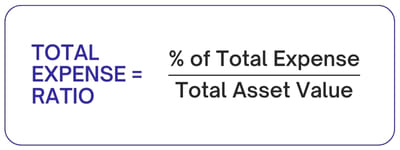To give you an idea of mutual funds hidden charges, here’s a little anology. When you rent an apartment, you may think that the rent you pay is the only cost for your rented residence. But then you pay the estate agent’s commission. You quickly realise that you also have to pay for society maintenance and the parking space for your vehicle. You reluctantly have to pay the ‘chanda’ or contribution that the housing society collects from everyone to celebrate various festivals and national holidays, even though you may not participate in them. You have to give ‘baksheesh’ to the cleaner on Diwali. And on top of all this, the estate agent keeps coming every year for the commission that he apparently thinks you owe him, otherwise threatening to involve the Agents’ Association.
What you ended up paying extra, could be defined as hidden charges – charges that were not apparent on the face of it, charges you will end up incurring. So you are actually paying more than what you bargained for.
Similarly, mutual funds have hidden charges. You will not come across these charges unless you invest, and since these charges are taken directly from your funds, you may never notice them while they actually reduce your overall returns.
Here’s a list of some of the hidden charges of mutual funds –
One-Time Hidden Charges
1. Entry Load:
When an investor has to pay a cost when he purchases a fund unit for the first time, it is called an entry load. This fee supported the AMC’s distribution costs associated with promoting any mutual fund scheme and this charge was usually of about 2.25% of the value of investment. In 2009, the SEBI (Securities and Exchange Board of India) announced that no fund house would charge their investors an entry load. Therefore, you may want to make sure the mutual fund plan you have selected to invest in has no entry load.
2. Exit Load:
This is a fee levied on investors when they decide to redeem their mutual fund units. AMCs (Asset Management Companies) impose an exit load on investors to discourage them from opting out of a mutual fund scheme prematurely. There are no fixed exit load charges, and it may vary based on the scheme. Mutual funds could charge exit load anywhere from 0.50% to as high as 3.00% of your total holding value, depending on the holding period. Please note that if the investors continue to hold the investment beyond the specified period, no exit load is charged.
The exit load is generally computed as a percentage of the mutual fund’s NAV (Net Asset Value) at the time of redemption and not that of capital gain. As a result, if your NAV value is Rs. 1,00,00,000, and the exit load is as high as 3%, Rs. 3,00,000 will be deducted and the remainder of your investment proceeds i.e. Rs. 97,00,000 will be returned to you.
Recurring Hidden Charges
1. Expense Ratio
Usually, you invest in mutual funds through an AMC (asset management company). This asset management company will charge a fee to manage your portfolio. This fee compensates management while also covering investment-related costs such as administration, marketing, and GST. This is called the expense ratio or management fee. The expense ratio varies from AMC to AMC and across mutual fund schemes and it is usually around 2.5%. This charge is deducted from your returns. Hence, with a 2.5% expense ratio, if your fund has a return of 6%, effectively you are only getting a 3.5% benefit.

The expense ratio is calculated as a percentage of the total expense incurred on a fund divided by the total asset value of the fund. This is known as the Total Expense Ratio.
According to the SEBI guidelines, every AMC is allowed to charge investors an annual maintenance fee to cover its expenditures. Because it is measured as a proportion of the entire fund asset, it directly impacts the returns that an investor might expect.
a. Management Fee
An investor’s returns are usually influenced by the fund manager’s competence and actions. The management fee is an expense charged for paying the fund manager for his services and the management of the investment. Managing a massive amount daily while striving to overcome market risks is no mean feat. As a result, the fund houses levy a fee that has been permitted by the SEBI.
b. Administrative Cost
Customer service, legal fees, and other expenditures associated with the operation of a mutual fund are all covered here. Some AMCs charge investors if they do not maintain the required minimum balance. They subtract this cost from the investor’s portfolio.
c. Marketing Expense
This is the annual advertising and promotional fee. This fee is charged from investors for the marketing, printing, and mailing of the AMC, which keeps the investor informed via different marketing campaigns. The marketing and selling expense include agent commission as well.
d. GST (Goods and Service Tax)
The expense ratio of mutual funds is inclusive of GST, and you do not have to pay for it separately. For any service provided by the fund, such as management, GST at 18% is payable.
Other Charges
1. Account Fee:
This is a charge made by some mutual fund companies in case an investor doesn’t maintain a minimum balance. When the fund amount goes below the minimum balance amount, then the asset management company deducts a particular amount from the returns.
2. Switch Price:
This is the price to be paid to the asset management company when switching between mutual fund plans of one scheme to the other.
3. Commissions:
Mutual funds engage the services of agents and distributors who sell the mutual fund products to investors. These intermediaries are compensated by the mutual fund houses through commissions.
4. Fund Management Fees:
The fund house hires professional managers to manage the investments of the fund. They are compensated for their service through a fund management fee. This is usually a specified percentage of the fund assets.
Final Thoughts on Hidden Charges of Mutual Funds
Mutual fund investing has its own set of costs. If you utilize the service of a distributor or agent, you will incur a higher cost than going directly to the fund house. Sometimes these charges will not only eat into your capital gains, but they may also reduce your investment principle. Make sure you understand all the charges beforehand and demand full disclosure from the AMC before you invest.
References:
1. Charges for Mutual Funds – Hidden & SIP Charges – Upstox
2. How These Hidden Charges Can Reduce Your Mutual Fund Returns (personalfn.com)
3. What are the costs involved in Mutual Fund Investing? Are there any hidden fees/charges? (dspim.com)





